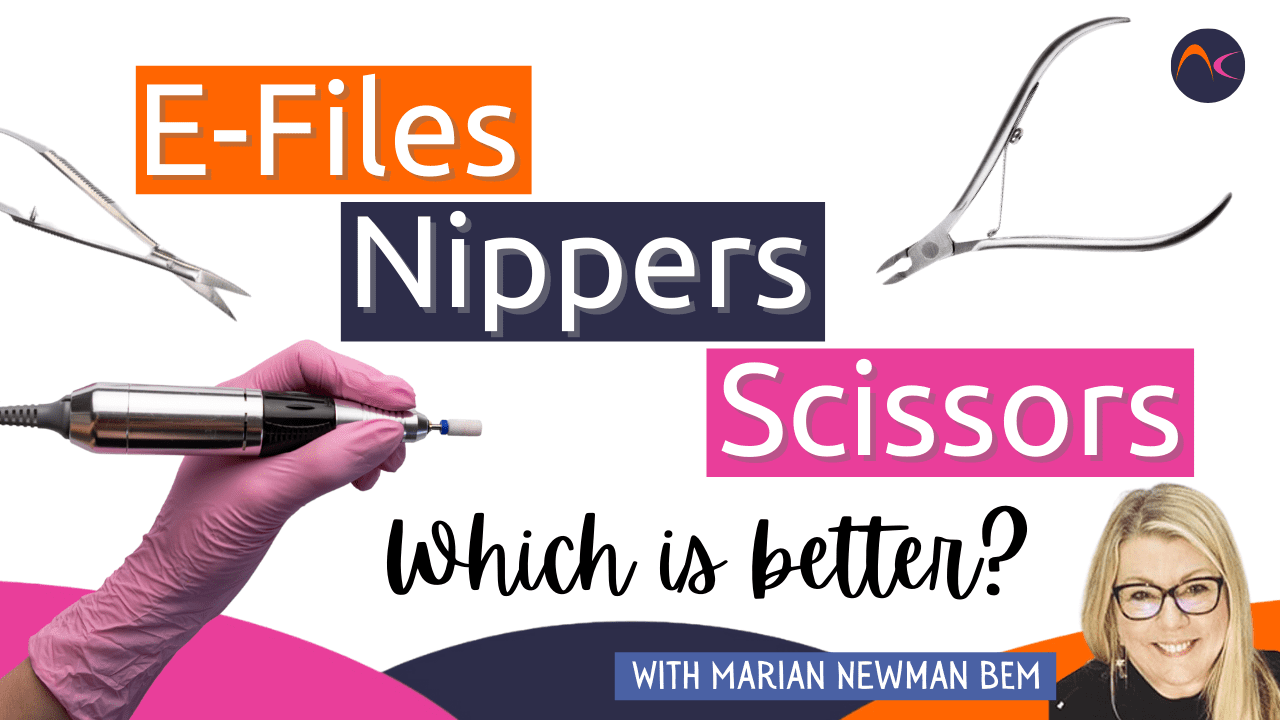Whenever there is an article or an SM post on these topics it always creates a lot of passionate responses, especially about the e-file for a manicure. It creates such a divide in the pro nail industry. There are many ‘for’ an e-file manicure, not quite so many for the more aggressive version, known as the ‘Russian manicure’. There are also many fervently against this method. Probably not so many in the ‘middle ground’.
I, personally, am probably more in the ‘middle ground’ and believe all of these tools can be used safely and effectively. But I have a very large caveat alongside this opinion and this is what this blog is all about! (OK, I admit, the title is a bit misleading!)
What is FAR more important to understand before being able to answer this question is the nail unit anatomy. When you understand this and believe it, then is the time to be able to answer that question from an informed position as a nail professional.
You’ll notice I have used the word ‘believe’? Well, here we have more disparity and a divide in the global nail industry. Not everyone believes in the correct scientifically proven nail anatomy! Why is that?
The answer to that particular question probably dates back many decades. A manicure is a cosmetic treatment and not a medical one, never has been and, in its current format, never will be. The early procedures and terminology didn’t come from a medical standpoint and, over the years, various countries and communities have called the structures in the nail unit anatomy different things, many of which have been inaccurate.
Take for example the area at the base of the nail; it has been called the cuticle, pterygium, eponychium, and, more recently, the proximal nail fold. So why has the terminology changed? Who knows what is right?
Well, the anatomy of the nail unit hasn’t changed. The physiology and functions have not changed. The human finger and toes nails haven’t evolved into something that fits the terminology. It has remained the same since primates and other animals evolved millennia ago.
What has happened is that, as the manicure/pedicure treatments have grown in popularity, research and development has had a lot more investment. This is in the search for products that can improve damaged conditions, work more efficiently and, above all, avoid inflicting damage in the quest for beautifying the hands, feet, and nails.
Durante este tiempo, las conjeturas que se desarrollaron durante los procedimientos anteriores y la enseñanza en la primera mitad del siglo XX se han ido sustituyendo poco a poco por un enfoque más médico. Científicos, anatomistas, fisiólogos y dermatólogos conocen desde hace tiempo la unidad ungueal e identifican las estructuras utilizando una terminología precisa.
Lo que ha ocurrido en el sector de las uñas es que ahora seguimos la ciencia médica y no las primeras conjeturas. Cuando se entiende bien este ámbito, queda muy claro qué es lo vivo y qué es lo inerte. Las funciones de cada una son obvias y de dónde se desarrolló todo en el cuerpo humano.
Unfortunately, many experienced nail pros have not kept up with their understanding either from negligence (and I use that word advisedly) or from a refusal to move away from their early education. Many new to the industry are not taught correctly and need to find out over time. You don’t know what you don’t know! Those with a questioning mind will keep asking “yes, but why and how?” They will find out quickly.
All of the tools mentioned in the title can inflict a lot of damage. They are blades or the e-file along with files and buffers are abrasives and can easily damage the nails and skin. Correct use of them is crucial.
But, even more, crucial is the understanding of the nail unit. What is considered the correct procedure to help improve the condition and appearance and what, with knowledge, has the potential to damage more than help. Essentially the structure and growth of the nail plate; the physiology and function of the skin; the position, function, and terminology of the structures deeper inside the finger, and how and why these need protecting. Although not a medical treatment the approach is closer to medical than it ever was.
Una de las lecciones de Nail Knowledge Masterclass The Nail Unit muestra una animación de cómo se desarrolla la unidad ungueal en el feto. Para mí, este es uno de los momentos de aprendizaje más cruciales.
Until you have this level of understanding you are not able to answer the question in the title and make wise choices both in the ‘best’ tool or level of education you need to use them safely and effectively.
Todos están a salvo en las manos adecuadas.

